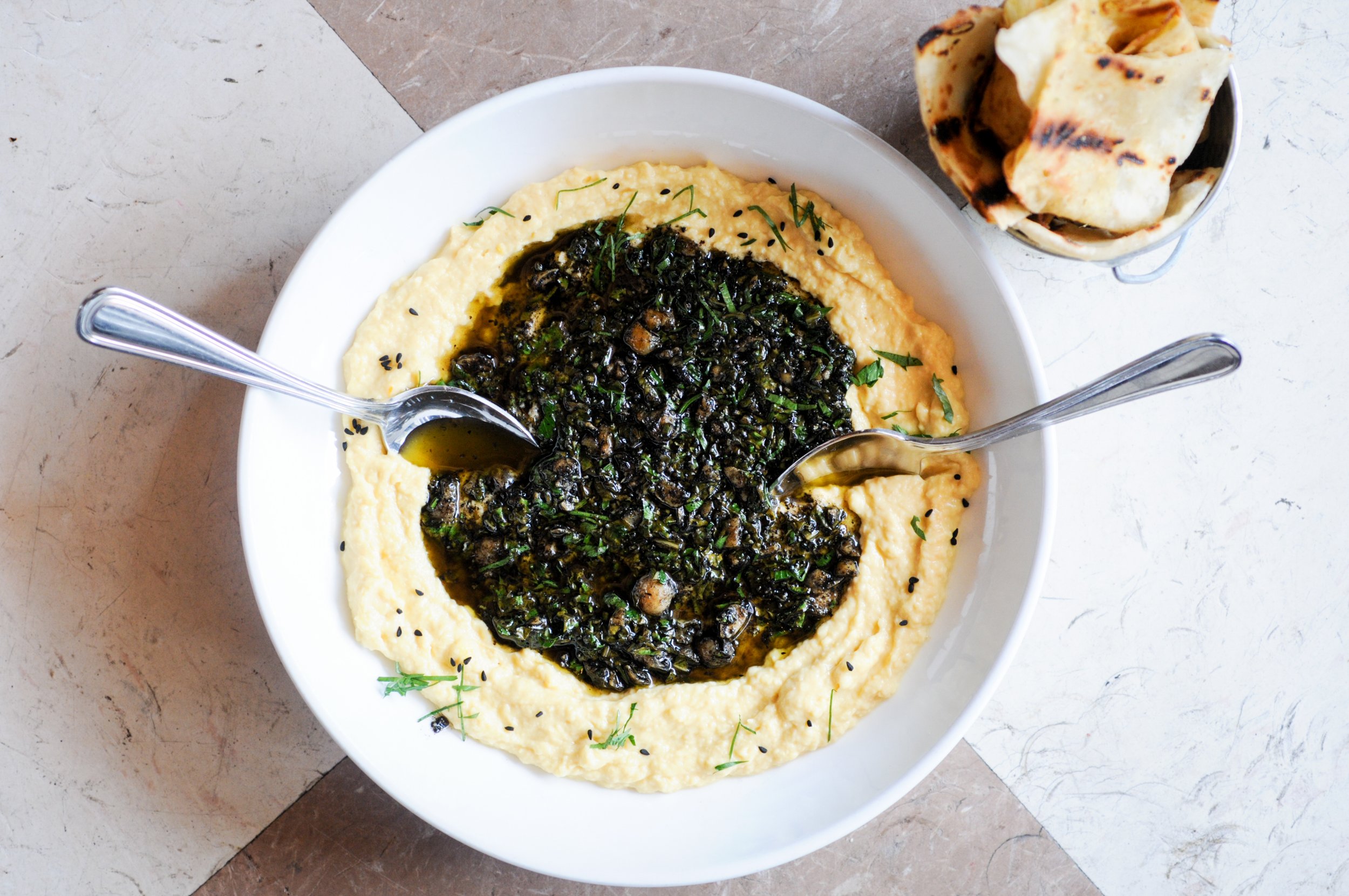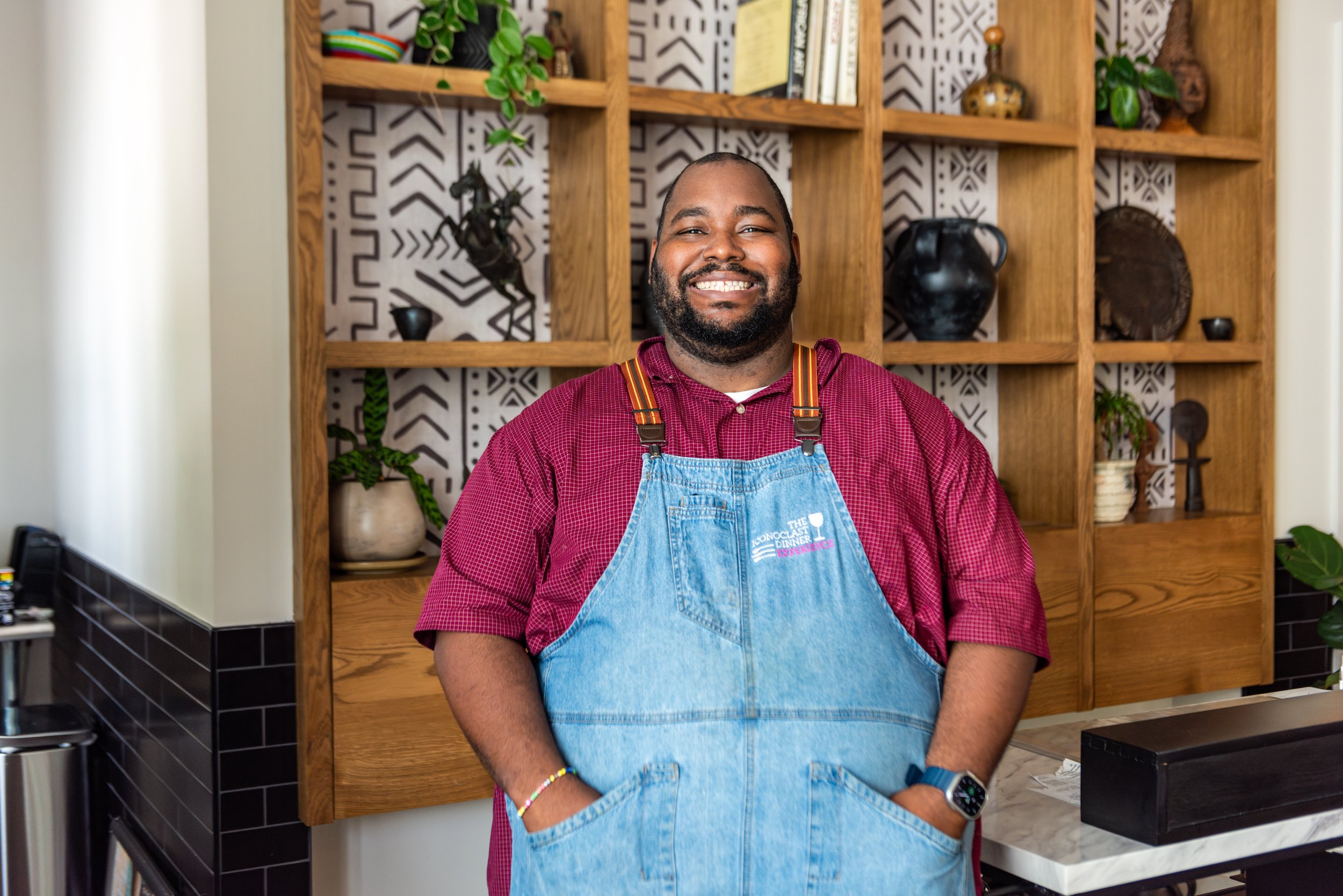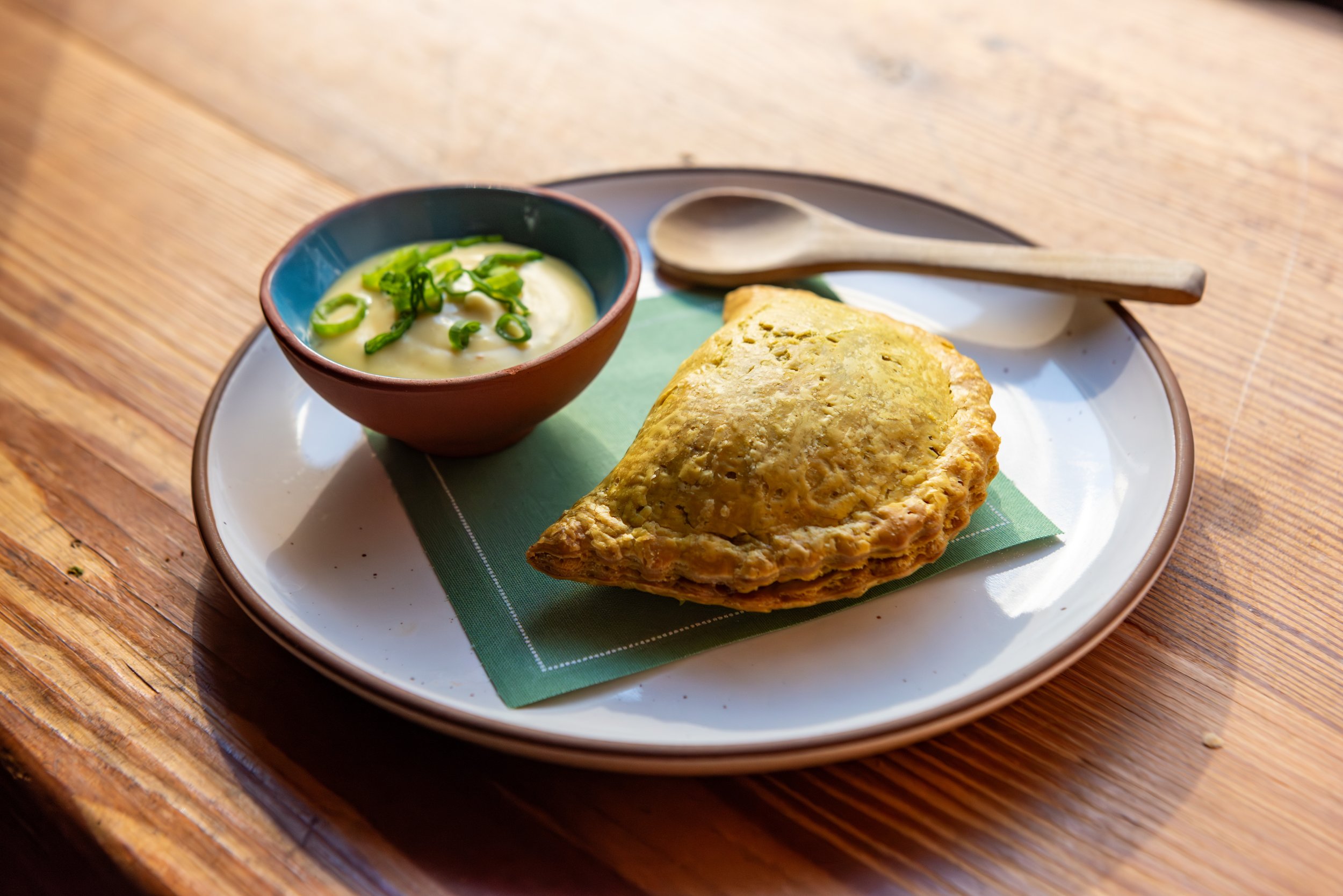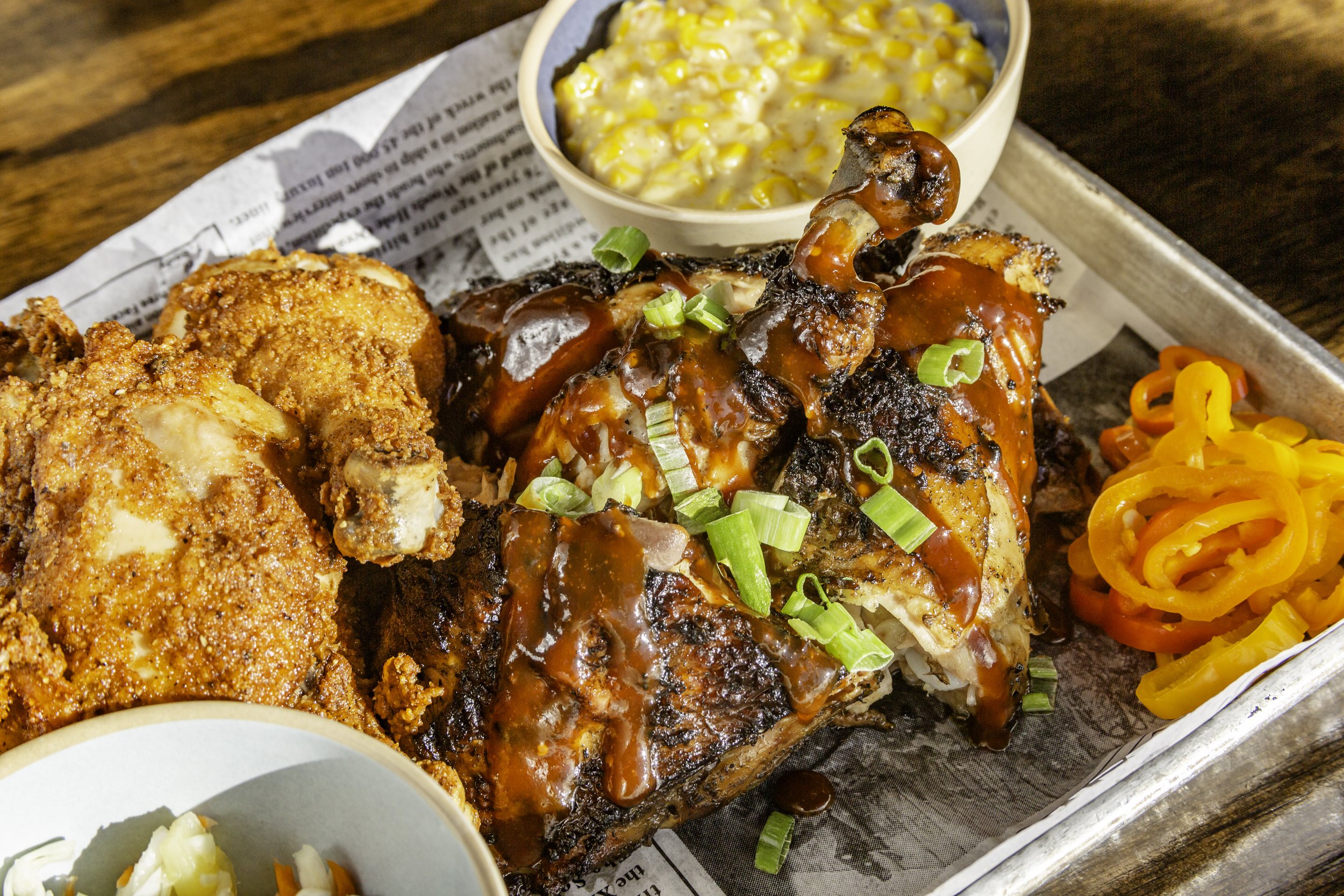When Ackee Met Hummus: A New York-Caribbean Love Story
There aren't too many U.S. chefs cooking with ackee, let alone innovating the bizarre-looking staple of Jamaican cooking. That's where Andre Fowles comes in.
What’s commonplace in the Caribbean can feel downright exotic in New York, especially in the depths of winter. Take ackee, a bizarre looking fruit with pink skin, giant black seeds, and pale yellow flesh that looks a bit like fatty brain tissue. Oh, and it’s poisonous, if it isn’t properly ripened or prepared. (We’re really selling it. We know.) Although it hails from West Africa, ackee is the national fruit of Jamaica and one of two primary components in the national dish, ackee and saltfish.
You may have eaten ackee at an all-inclusive resort buffet in Negril, but in American few chefs are cooking with it. “Ackee has a creamy, silky texture and is best paired with savory, bold flavors, says Chef Andre Fowles, the Jamaican-born and CIA-trained chef at Miss Lily’s in New York (with locations in Soho, off Saint Mark’s, plus one in Dubai). “Ackee really takes the flavor of the dish, similar to tofu!”
Beyond bringing a constant aura of sunshine to the city through jerk chicken, fresh juices, and cold bottles of Carib, Miss Lily’s also educates diners on the Caribbean culinary diaspora—through dishes like “buss up shut” and oxtail stew (Fowles mom’s recipe) and ingredients like ackee.
For chefs, Ackee’s primary drawback is that you can’t buy it fresh, even if you run the kitchens of a booming Caribbean restaurant group. Because its potential toxicity, the U.S. Food and Drug Administration regulates a list of approved processors and importers, who deliver the fruit to our borders frozen, canned, and completely safe. “There’s really no significant difference in texture, taste, or quality in canned or fresh ackee, but, as with most foods, it’s best to use fresh when available,” says Fowles. (In case you find yourself in front of an ackee tree in Africa or the Caribbean, don’t eat the fruit unless it’s completely ripe, and the skin is split open with the flesh and seeds protruding outward. Got it?)
“We’re always thinking of what’s next. We want to push the boundaries.”
Canned or fresh, ackee’s creamy texture, subtle tropical flavors, and fat content (primarily oleic acid, akin to avocado) make it more versatile than you might think, according to Fowles. “We’re always thinking of what’s next. We want to push the boundaries.”
Fowles doesn’t stick with tradition when it comes serving ackee at Miss Lily’s. Instead, he whips it into a bowl of what might be New York’s least traditional hummus. Ackee’s nutty, fruity notes whisper through the mixture of chickpeas, roasted garlic, tahini, and the usual suspects, and the fruit lends the hummus a light, airy quality that the chickpeas couldn’t achieve on their own. Fowles tops the hummus with a deeply charred onion and garlic pesto and serves it with hot roti. It’s a hyper-creative, cross-cultural composition that blends a staple from Fowles’ upbringing with a dish that’s making appearances on menus across the country.
“In New York, I have more freedom [than Jamaica]. You’re surrounded by diverse diners, who expect to eat and try everything—not just traditional foods,” says Fowles, who has also thought about incorporating ackee into traditional beurre blanc to accompany jerked steak or seafood.
Ackee is unlikely to take a star turn as 2017’s “it” ingredient (or 2018 for that matter), but Fowles’ hummus has the power to endear it to a new audience of diners at Miss Lilly’s and expand the potential for an exotic, poorly understood, and not-so-sexy fruit with a whole lot of character.




